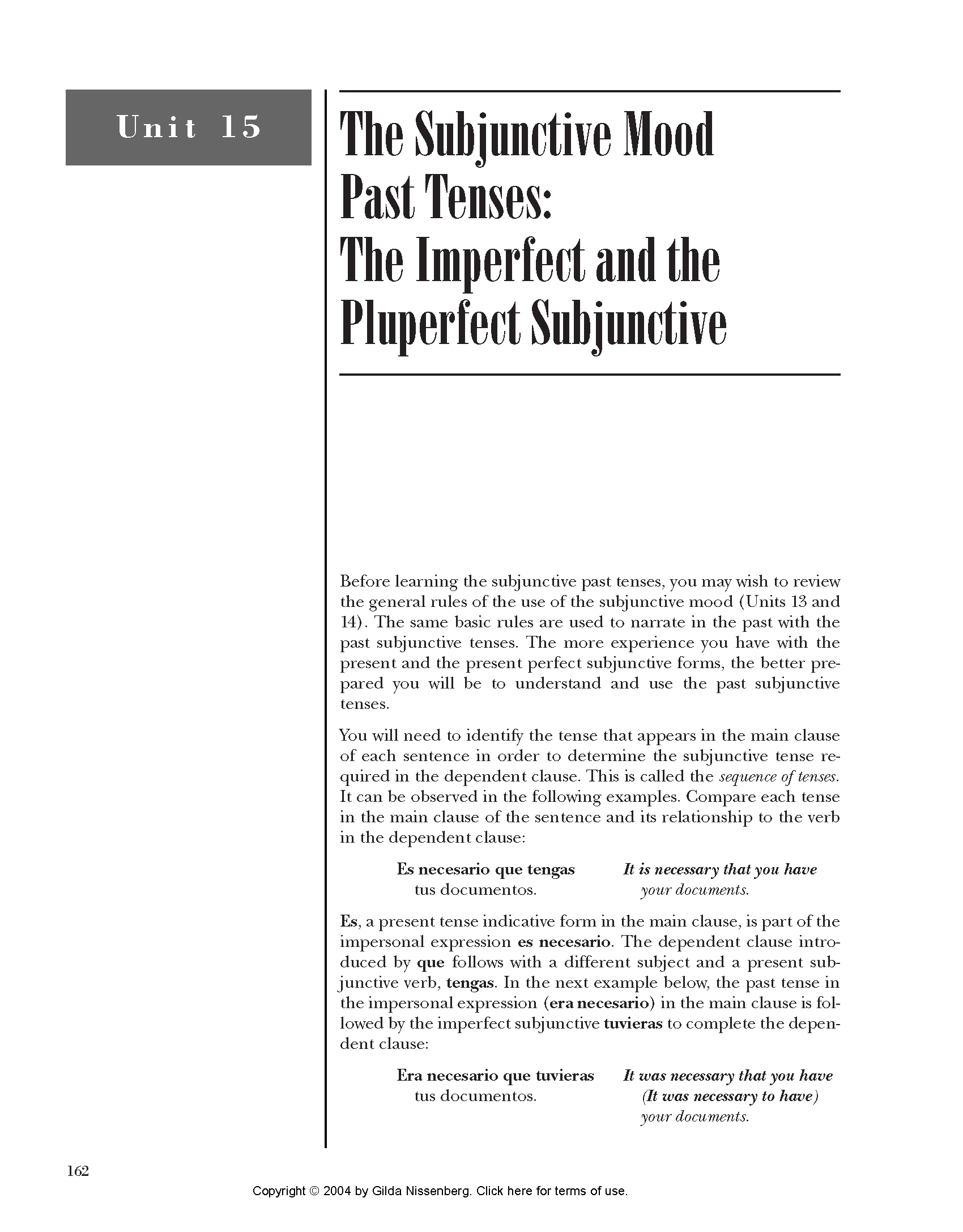CSG173

Unit 15
The 8ubjunotive Mood Past Tenses:
The Imperfect and the Pluperfect Snbjnnctive
Before learning the subjunctive past tenses, you may wish to review the generał rules of the use of the subjunctive mood (Units 13 and 14). The same basie rules are used to narrate in the past with the past subjunctive tenses. The morę experience you have with the present and the present perfect subjunctive forms, the better pre-pared you will be to understand and use the past subjunctive tenses.
You will need to identify the tense that appears in the main clause of each sentence in order to determine the subjunctive tense re-quired in the dependent clause. This is called the seąuence of tenses. It can be observed in the following examples. Compare each tense in the main clause of the sentence and its relationship to the verb in the dependent clause:
Es necesario que tengas It is necessary that you have
tus documentos. your documents.
Es, a present tense indicative form in the main clause, is part of the impersonal expression es necesario. The dependent clause intro-duced by que follows with a different subject and a present sub-junctive verb, tengas. In the next example below, the past tense in the impersonal expression (era necesario) in the main clause is fol-lowed by the imperfect subjunctive tuvieras to complete the dependent clause:
Era necesario que tuvieras It was necessary that you have tus documentos. (It was necessary to have)
your documents.
Copyright © 2004 by Giida Nissenberg. Ciick here for terms of use.
162
Wyszukiwarka
Podobne podstrony:
CSG182 171 The Subjunctive Mood Past Tenses: The Imperfect and the Pluperfect Subjunctive •
CSG184 173 The Subjunctive Mood Past Tenses: The Imperfect and the Pluperfect Subjunctive In real an
CSG174 163 The Subjunctive Mood Past Tenses: The Imperfect and the Pluperfect SubjunctiveThe Imperfe
CSG176 The Subjunctive Mood Past Tenses: The Imperfect and the Pluperfect Subjunctive 165 5. &
CSG178 167 The Subjunctive Mood Past Tenses: The Imperfect and the Pluperfect SubjunctiveOther Uses
CSG180 The Subjunctive Mood Past Tenses: The Imperfect and the Pluperfect
CSG182 171 The Subjunctive Mood Past Tenses: The Imperfect and the Pluperfect Subjunctive •
CSG184 173 The Subjunctive Mood Past Tenses: The Imperfect and the Pluperfect Subjunctive In real an
CSG142 Unit 13The 8ubjunotive Mood:The Present and the Present Perfect Subjunctive Tenses in No
CSG046 Unit 4The Preterit TenseRegular Verbs in the Preterit The preterit (el preterito) is one of s
więcej podobnych podstron